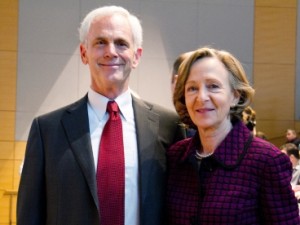
I wrote last week about a new report from the Brookings Institution outlining the geography of U.S. manufacturing, and mentioned that there’s a pretty interesting debate taking place over the role of manufacturing policy at the federal level. I also mentioned that MIT hosted a two day conference this past week on “The Future of Manufacturing in the U.S.” and though I did not attend, MIT News has the scoop on some of what was said.
Before I get to that, let’s recap the basics of what is generally agreed upon in this debate.
1) Manufacturing is an essential component to innovation. Having advanced manufacturing capacity nearby to where high tech innovation is happening is important.
2) The exodus of manufacturing from the U.S. has slowed, due to rising energy costs (making shipping more expensive) and higher labor costs on some part of the world.
The question, though, is what to do about it. And the MIT News report points to two different approaches. Here’s one:
[U.S. Commerce Secretary John] Bryson outlined a series of White House proposals to aid manufacturing. Many of these involve the tax code: tax credits that reduce moving expenses when companies bring jobs back to the United States; a permanent tax credit for R&D; and a reduction in the corporate tax rate.
Now, Bryson and the Obama administration want to go further than this, but leave that aside for now. Looking just at that quote, we can call this the good innovation policy is enough view. It calls for the same kind of policies that promote innovation in general, like lowering the corporate tax burden, subsidizing R&D and subsidizing education. This approach banks on the fact that if we can maintain our high tech edge, the innovation economy will provide for adequate advanced manufacturing more or less on its own.
Compare that with what MIT President Susan Hockfield said:
Hockfield, who co-chairs the steering committee of the White House’s Advanced Manufacturing Partnership (AMP), discussed some of the imminent recommendations that group is going to make. These fall into three main categories, Hockfield noted: policies intended to improve the business climate for manufacturers; programs to encourage people to develop skills useful for manufacturing jobs, especially through community college education; and funding for new regional technology-development test beds called Manufacturing Innovation Institutes.
It’s clear that for Hockfield and the administration, manufacturing needs its own policy focus. This approach calls for subsidizing manufacturing specifically, and for related training specifically. There’s comparatively less faith in high tech clusters to support manufacturing on their own.
As I wrote last time, I’m not yet sure where I fall here. But I wouldn’t be too quick to dismiss either view. For what it’s worth, MIT does a great job of doing the kind of interdisciplinary work – combining the insights of economics, geography, engineering, etc. – needed to answer a question like this. So, the fact that the institution is lining up on the side of do more for manufacturing is a big deal.

